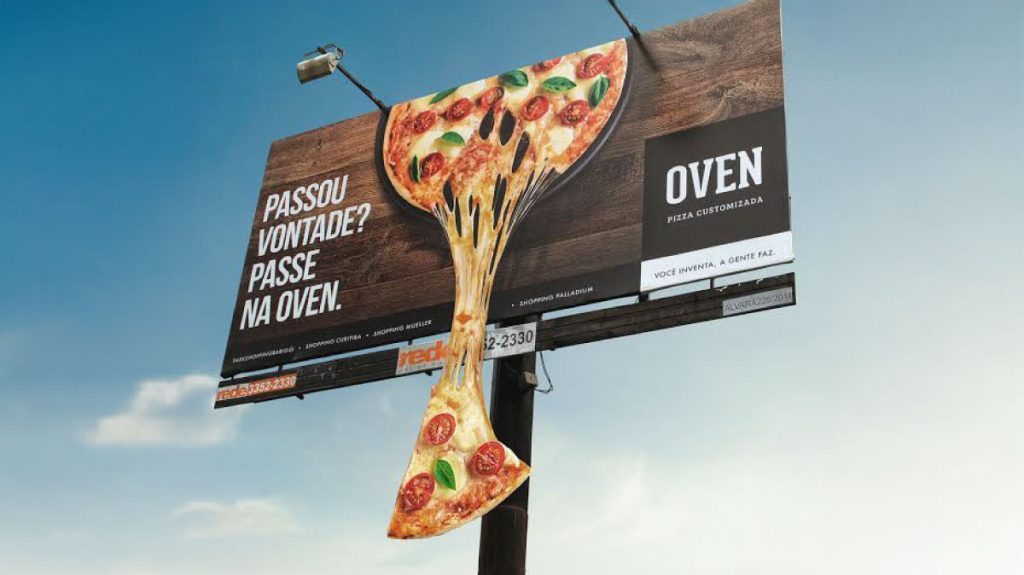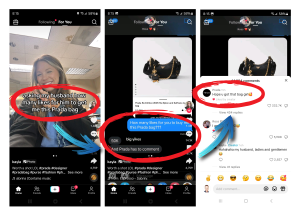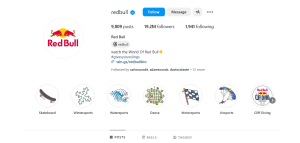
Marketing is more than just promoting products or services; it’s about understanding consumer psychology.
People are endlessly fascinating to me. Their behaviors, choices, motivations, and cultural influences create a complex tapestry that us marketers and business professionals strive to understand. Why does someone choose brand A over brand B? What motivates a purchase? How do culture and values shape decisions? How do trends emerge and shift over time?
Consumer Psychology and Marketing: An In-Depth Look
Consumer psychology is the study of how people make decisions about what they buy, need, want, or act in regard to a product, service, or brand. It explores the processes and influences behind consumer behavior, providing valuable insights that marketers can use to shape their strategies.
Here are some key aspects of consumer psychology and how they relate to marketing:
Maslow's Hierarchy of Needs in Consumer Psychology and Marketing
Maslow’s Hierarchy of Needs is a psychological theory proposed by Abraham Maslow in 1943, which posits that human needs are arranged in a hierarchy. People are motivated to fulfill basic needs before moving on to higher-level needs. Understanding this hierarchy can provide valuable insights for marketers aiming to appeal to consumers at different stages of need fulfillment.
The Hierarchy Explained
- Physiological Needs: These are the most basic human needs for survival, such as food, water, warmth, and rest.
- Safety Needs: Once physiological needs are met, the focus shifts to safety and security, including personal security, health, and financial stability.
- Social Needs: These include love, friendship, and a sense of belonging.
- Esteem Needs: After social needs are satisfied, esteem needs become important. These include the need for self-esteem, recognition, and respect from others.
- Self-Actualization: This is the highest level, where individuals strive to realize their full potential and achieve personal growth and fulfillment.
Applying Maslow’s Hierarchy to Marketing
1. Physiological Needs
- Product Examples: Food, beverages, clothing, and shelter.
- Marketing Strategy: Emphasize the essential nature of the product. Use messages that highlight how the product meets basic survival needs. For example, a bottled water company might focus on purity and hydration.
2. Safety Needs
- Product Examples: Insurance, healthcare products, home security systems.
- Marketing Strategy: Stress the safety, reliability, and protection offered by the product. An insurance company might use testimonials of customers whose lives were stabilized by their services.
3. Social Needs
- Product Examples: Social media platforms, dating apps, community events.
- Marketing Strategy: Highlight how the product fosters connections and a sense of belonging. For instance, a social media platform might emphasize how it keeps people connected with friends and family.
4. Esteem Needs
- Product Examples: Luxury goods, high-end fashion, professional services.
- Marketing Strategy: Appeal to the desire for status, recognition, and self-respect. A luxury car brand might market its vehicles as symbols of success and achievement.
5. Self-Actualization Needs
- Product Examples: Educational programs, personal development courses, creative tools.
- Marketing Strategy: Focus on personal growth, creativity, and fulfillment. A company offering online courses might highlight stories of individuals who achieved their dreams through learning and self-improvement.
Practical Implications for Marketers
Segmenting the Market: Understanding where different segments of your target audience fall within Maslow’s hierarchy can help tailor your messaging and product offerings. For example, younger consumers might prioritize social needs, while older consumers might be more focused on safety and esteem needs.
Crafting Messages: The language and imagery used in marketing campaigns should align with the specific needs of the target audience. For instance, safety-focused messages might include reassurances of security and protection, while esteem-focused messages might feature testimonials from respected figures or highlight exclusivity.
Product Development: Insights from Maslow’s hierarchy can guide product development to ensure offerings meet the specific needs of different consumer segments. For instance, a tech company might develop a new app that helps users connect with others (social needs) or manage their health (safety needs).
Customer Journey: Mapping the customer journey through the lens of Maslow’s hierarchy can identify opportunities to address unmet needs at each stage. For example, initial marketing efforts might focus on addressing physiological and safety needs, while later efforts could shift to social and esteem needs as customers become more engaged with the brand.
Maslow’s Hierarchy of Needs provides a valuable framework for understanding consumer motivations and behaviors. By aligning marketing strategies with the specific needs at different levels of the hierarchy, brands can create more effective and resonant campaigns. Whether it’s emphasizing the essential nature of a product, highlighting its safety features, fostering connections, appealing to status, or promoting personal growth, this approach ensures that marketing efforts meet the most relevant and compelling needs of the target audience.
Intrinsic vs. Extrinsic Motivation in Consumer Psychology and Marketing
Understanding what drives consumers to make decisions is crucial for crafting effective marketing strategies. One key aspect of consumer behavior is the distinction between intrinsic and extrinsic motivation. Recognizing whether consumers are driven by internal desires or external rewards can help marketers tailor their messages and influence purchasing decisions more effectively.
Intrinsic motivation refers to engaging in an activity for its own sake, deriving satisfaction from the activity itself rather than from some separable consequence. When consumers are intrinsically motivated, they find the activity or the product inherently enjoyable or fulfilling.
Examples:
- A person buys a novel because they love reading and find joy in discovering new stories.
- Someone participates in a hobby, like painting or gardening, because it brings them personal satisfaction and relaxation.
Marketing Strategy:
- Highlight Enjoyment and Fulfillment: Emphasize the pleasure and personal satisfaction that the product or service provides. For example, a marketing campaign for a cooking class might focus on the joy of creating delicious meals and the personal growth experienced through learning new culinary skills.
- Promote Self-Expression: Products that allow consumers to express themselves or pursue their passions can be marketed by showcasing how they enable creativity and individuality. A brand of musical instruments might feature stories of musicians who use their instruments to create unique sounds and express their artistic vision.
Extrinsic motivation involves engaging in an activity to achieve an outcome that is separable from the activity itself. This type of motivation is driven by external rewards or pressures, such as earning money, gaining recognition, or avoiding negative consequences.
Examples:
- A person buys a high-end watch to signal their status and success to others.
- Someone signs up for a fitness program to receive a reward, like a discount or a prize, upon completion.
Marketing Strategy:
- Emphasize Rewards and Benefits: Highlight the tangible rewards or benefits that come with purchasing the product or service. For example, a loyalty program might offer points, discounts, or exclusive access to events as incentives for frequent purchases.
- Appeal to Social Recognition: Products that confer social status or recognition can be marketed by showcasing their prestige and the admiration they garner from others. A luxury car brand might feature advertisements showing successful individuals driving their vehicles, emphasizing the respect and envy they attract.
The Ingredients of a Successful Marketer
What goes into being a successful marketer? I believe there are six things you need to have:
- Curiosity: An innate desire to understand people and their behaviours.
- Creativity: The ability to think outside the box and come up with innovative ideas.
- Writing: Crafting compelling messages that resonate with the audience.
- Design: Visual storytelling that captures attention and communicates the brand’s essence.
- Technology: Leveraging digital tools and platforms to reach and engage consumers.
- Competitive Spirit: The drive to outdo the competition and achieve marketing goals.
- Business and Data Mindset: Successful marketing requires a business acumen. This means understanding market dynamics, setting strategic goals, and interpreting data to make informed decisions. A strategic mindset ensures that marketing efforts align with business objectives, while a learning mindset keeps you adaptable in an ever-evolving field.
One of the most rewarding aspects of a marketing career is the opportunity to work with smart, talented, and kind individuals. Being surrounded by likeminded people who share your passion for marketing fosters a collaborative environment where ideas flourish, and professional growth is encouraged.


Continue reading: What’s the ROI of a Billboard
Why You Should Invest in Marketing
Marketing is not just about promoting your products or services; it’s about building a brand that resonates with your audience, creating connections that drive loyalty, and fostering growth. Effective marketing helps you reach new customers, strengthen relationships with existing ones, and differentiate yourself from the competition. By investing in marketing, you are laying the foundation for sustained success and long-term profitability.
Marketing is about:
Building Awareness
Marketing helps to get your brand noticed. Through consistent and strategic efforts, you can introduce your products or services to potential customers who might not have known about you otherwise.
Creating Desire
Effective marketing goes beyond simply showcasing a product. It tells a story, creates an emotional connection, and makes people desire what you offer. This is where creativity and innovation come into play, capturing the hearts and minds of your target audience.
Driving Action
Ultimately, the goal of marketing is to drive action. Whether it’s making a purchase, signing up for a newsletter, or following your brand on social media, marketing motivates people to take the next step.
Building Community
Marketing can help build a sense of community around your brand. By engaging with your audience through social media, events, and content, you can foster a loyal customer base that feels connected to your brand and advocates for it.
Cultivating Loyalty
A strong marketing strategy cultivates customer loyalty. By consistently delivering valuable content and engaging experiences, you can create lasting relationships with your customers, encouraging repeat business and word-of-mouth referrals.
Enhancing Brand Perception
Marketing shapes how your brand is perceived in the market. Through strategic messaging, design, and storytelling, you can position your brand as a leader in your industry, building trust and credibility with your audience.
Supporting Business Growth
Investing in marketing supports overall business growth. Effective marketing strategies drive sales, increase market share, and open up new opportunities for expansion and innovation, ensuring your business remains competitive and successful.

Marketing is Not a One-time Effort
Marketing is not a one-time effort; it’s an ongoing process of experimentation, refinement, and innovation. It’s about constantly learning what works and what doesn’t, adapting to changes in the market, and finding new ways to connect with your audience.
Experiment: Try different approaches and channels to see what resonates with your audience. From social media campaigns to influencer partnerships, don’t be afraid to explore new avenues.
Refine: Analyze the results of your marketing efforts and use the insights to improve. This could mean tweaking your messaging, redesigning your website, or targeting a different demographic.
Innovate: Stay ahead of the curve by embracing new trends and technologies. Whether it’s leveraging AI for personalized marketing or using immersive experiences like virtual reality, innovation keeps your brand relevant and exciting.
The Value of Marketing
Investing in marketing is investing in the future of your company. It’s about creating a brand that people recognize, trust, and love. It’s about turning potential customers into loyal advocates who choose your product over the competition. Marketing works, but it’s not always easy. It requires dedication, creativity, and a willingness to keep pushing the boundaries.
So, take a look around your home again. Remember how all those items ended up there. Now, imagine someone doing the same with your product. That’s the power of marketing. Keep experimenting, refining, and innovating, and you’ll see the impact it can have on your company’s success.
The Psychology of Exclusivity
Brands can harness the power of exclusivity to create higher demand by leveraging the psychological appeal of rarity and uniqueness. When a product is perceived as exclusive or limited in availability, it becomes more desirable to consumers who seek status and differentiation.
This can be achieved through limited-edition releases, membership-only access, or exclusive collaborations. By offering something that is not readily available to everyone, brands can create a sense of urgency and elevate the perceived value of their products.
This strategy not only drives immediate sales but also fosters a loyal customer base that feels privileged to be part of an exclusive group, thereby enhancing brand prestige and long-term demand.



- Related post: The T-Shirt Theory of Branding
- Related post: The Power of Branding: John’s Family Premium Organic Garlic
- Related post: Why You Don’t Want to Run a Business that Relies Solely on Ads
Related Posts about Social Media
Need help with your marketing activities?
If you’re looking to make a move with your marketing, reach out to us. We are priced fairly, we’re straight shooters, and are the very best at what we do.
















